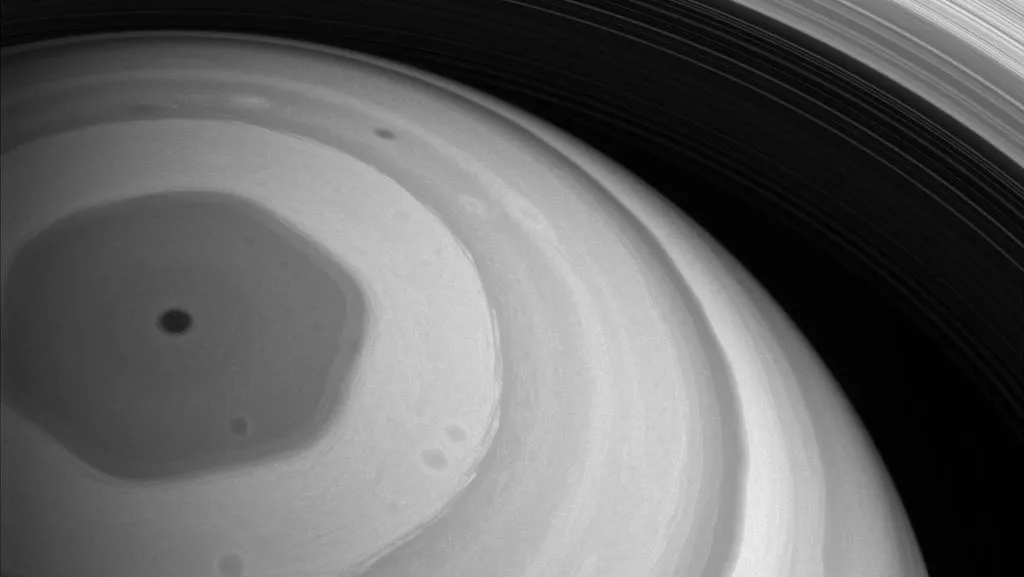The hexagonal storm around Saturn's northern pole. NASA's Cassini probe watched the storm over its entire mission until it crashed into the planet in 2017. Image Credit: NASA/JPL-Caltech/SSI/Hampton University
NASA’s Cassini probe has revealed that Saturn’s strange hexagonal storm could tower hundreds of kilometres over the cloud deck.
Recently analysed data from Cassini revealed a previously unseen vortex in Saturn’s stratosphere, a high-altitude layer of the atmosphere.
“The edges of this newly-found vortex appear to be hexagonal, precisely matching a famous and bizarre hexagonal cloud pattern we see deeper down in Saturn’s atmosphere,” says Leigh Fletcher of the University of Leicester, who led the study.
The hexagonal storm blows around Saturn’s northern pole, and was first seen by the Voyager spacecraft in the 1980s.

Similar phenomenon have been observed on Earth, such as the Polar Jet Stream.
Cassini studied the hexagon with a suite of instruments, including the Composite Infrared Spectrometer (CIRS).
CIRS acted as a heat vision camera, allowing the researchers to see parts of Saturn’s atmosphere that would otherwise remain invisible.
However, when Cassini arrived at the gas giant in 2004 the northern pole was still in winter, meaning the stratosphere was around -158ºC in temperature, 20ºC colder than CIRS could reliably measure.
“Saturn only began to emerge from the depths of northern winter in 2009, and gradually warmed up as the northern hemisphere approached summertime,” says Sandrine Guerlet from Laboratoire de Métérologie Dynamique, France.
“We were able to use the CIRS instrument to explore the northern stratosphere for the first time from 2014 onwards.
"As the polar vortex became more and more visible, we noticed it had hexagonal edges, and realised that we were seeing the pre-existing hexagon at much higher altitudes than previously thought.”
When the southern pole was in summertime, Cassini observed a similar warm column, but saw no hexagonal structure.
Understanding why the two poles look so different could give researchers insight into how energy is transported in not just Saturn’s atmosphere, but all planetary atmospheres including our own.
“Saturn’s northern hexagon is an iconic feature on one of the most charismatic members of the Solar System, so to discover that it still holds major mysteries is very exciting,” says Nicolas Altobelli, ESA project scientist for the Cassini-Huygens mission.
